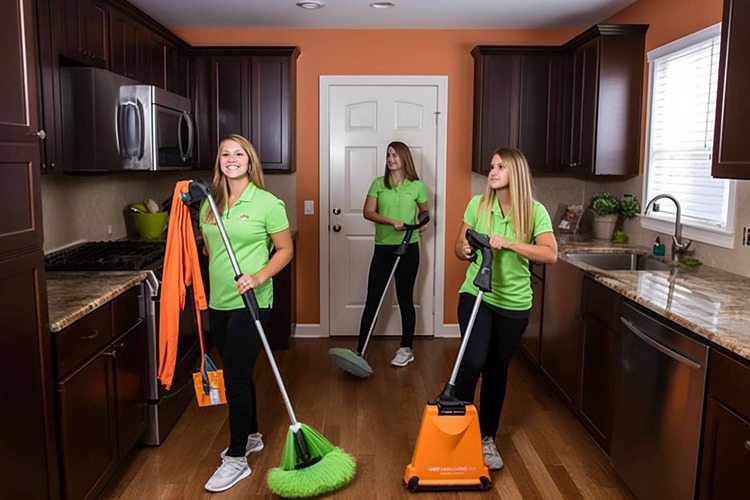Cleaning Services: What to Expect and How to Choose
A clean space feels better, functions better, and can even reduce daily stress. Whether you’re juggling a busy schedule or simply want a higher standard of cleanliness, professional cleaning services can save time while delivering consistent results. This guide explains what reputable cleaners actually do, how to evaluate local services in your area, what to watch for on booking websites, and how to prepare your home or workplace for an efficient, effective visit.

What professional cleaners cover
Most cleaning companies offer several tiers of service. Standard residential cleaning typically includes dusting surfaces, vacuuming and mopping floors, cleaning bathrooms (toilets, sinks, showers), wiping kitchen surfaces, taking out trash, and spot-cleaning mirrors and fixtures. Deep cleaning goes further—often addressing baseboards, inside cabinets or appliances upon request, and built-up grime in hard-to-reach areas.
Specialized options include move-in/move-out cleaning, post-construction cleanup, and commercial janitorial services. Commercial services may cover high-traffic sanitation, restocking supplies, and periodic floor care (e.g., buffing, strip-and-wax). The best providers share a clear checklist beforehand and note which tasks are add-ons. That transparency helps you compare services like-for-like and avoid misunderstandings on scope and timing.
bulk_create_keyword explained for consumers
If you encounter the phrase bulk_create_keyword on a cleaning website or booking form, treat it as a technical placeholder rather than a service category. It’s not an industry term; it often appears when a content management or scheduling system exposes an internal label that should have been replaced with plain-language text. In practice, this indicates the provider intended to list multiple service options but a label slipped through.
Seeing this doesn’t necessarily reflect the quality of the cleaning work, but it does signal the site needs an update. To proceed confidently, look for a clear service list, a room-by-room or task checklist, and straightforward terms. If anything remains unclear, ask the company to confirm what’s included for your home or office. Transparent providers will readily clarify and correct the wording so you can make an informed choice.
Finding reliable local services
Trustworthy local services balance trained staff, consistent checklists, and responsive support. As you evaluate options in your area, consider:
-
Reviews focused on reliability, punctuality, and detail.
-
Proof of insurance and, where applicable, bonding.
-
Staff training and whether teams are employees or contractors.
-
A satisfaction policy and the process for re-cleans or corrections.
-
Whether the company brings its own supplies and equipment.
-
Flexible scheduling (one-time, weekly, bi-weekly, monthly) and clear rescheduling policies.
Ask how quality is monitored—spot checks, supervisor visits, or customer feedback loops—and whether the same cleaner or team can return regularly for consistency. For workplaces, confirm familiarity with your industry’s standards (e.g., food service, healthcare-adjacent offices, retail).
Eco-friendly products and safety
Many providers now offer green cleaning options that minimize harsh chemicals and strong fragrances while still removing dirt and residue. When sustainability is a priority, ask about third-party certifications (for example, products meeting recognized environmental standards), dilution practices, and microfiber usage to reduce waste. Good companies label their products, store them safely, and can provide Safety Data Sheets on request.
If household members have allergies, asthma, or chemical sensitivities, communicate this before the first visit. Providers can often substitute gentler products, avoid specific ingredients, or focus on mechanical methods like microfiber and HEPA-filtered vacuuming. For workplaces, confirm compliance with any safety protocols, access procedures, and after-hours preferences to minimize disruption.
This article is for informational purposes only and should not be considered medical advice. Please consult a qualified healthcare professional for personalized guidance and treatment.
Preparing your space for a smooth visit
A little preparation helps your cleaners focus on the tasks that deliver the most value. Tidy cluttered surfaces, secure valuables, and set aside items marked “do not clean.” If you have pets, arrange secure placement during service windows and note any special instructions. Provide access details, parking guidance, and alarm codes in a secure, documented way.
Share priorities in order of importance—such as bathrooms first, then kitchen, then floors—and any surfaces needing extra care (e.g., natural stone requiring pH-neutral cleaners). Time estimates vary by size, condition, and team size, but many providers can give a range after a brief questionnaire or walkthrough. If you plan ongoing service, align on frequency that matches your lifestyle: weekly for high-traffic homes, bi-weekly for balanced maintenance, or monthly deep cleans if you do light upkeep in between.
How scheduling and communication reduce friction
Clear communication prevents surprises. Confirm the appointment window, who will arrive, and what equipment they bring. Ask about weather or traffic delays and how updates are sent—text, call, or app notifications. For recurring visits, decide whether the same team will return and how substitutions are handled during holidays or staff changes.
Address any exceptions in advance—delicate collectibles, specialty flooring, or unusual surfaces—so the team arrives prepared. After the first visit, provide concise feedback on what exceeded expectations and what to tweak. Reputable providers welcome this because it fine-tunes the checklist and helps deliver more consistent results over time.
Understanding quality and hygiene standards
Quality cleaning isn’t just about appearance; it’s also about methodology. Look for evidence-based practices such as:
-
Color-coded cloths to avoid cross-contamination between bathrooms and kitchens.
-
Top-to-bottom, left-to-right workflows that prevent missed spots.
-
HEPA-filtered vacuums to capture fine particles.
-
Fresh mop heads and laundered cloths for each visit or area.
These practices support hygiene, especially in high-touch zones like doorknobs, light switches, and faucet handles. While routine cleaning is not the same as specialized disinfection, good habits limit soil transfer and help maintain a healthier environment between deeper sanitizing tasks.
Conclusion
Professional cleaning services work best when scope, safety, and standards are clear. Prioritize providers in your area that publish detailed checklists, communicate promptly, and document training and insurance. If you encounter technical placeholders like bulk_create_keyword on a site, interpret it as a labeling oversight and ask for clarification. With the right expectations and a bit of preparation, you can enjoy consistent, high-quality results tailored to your space.






